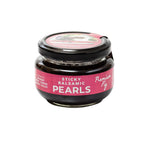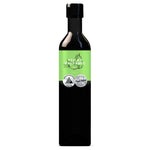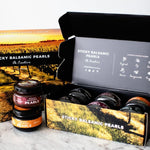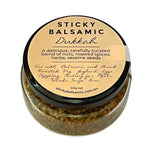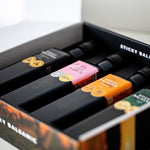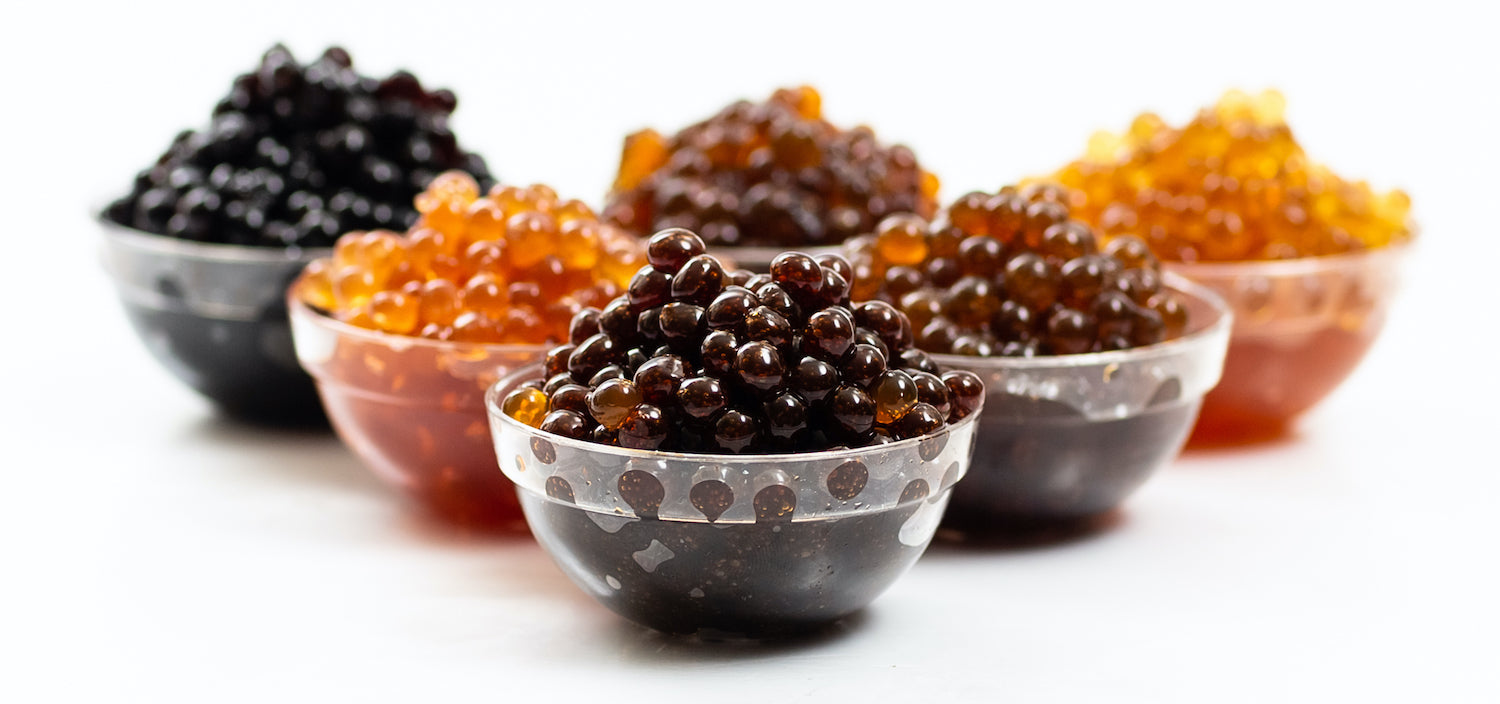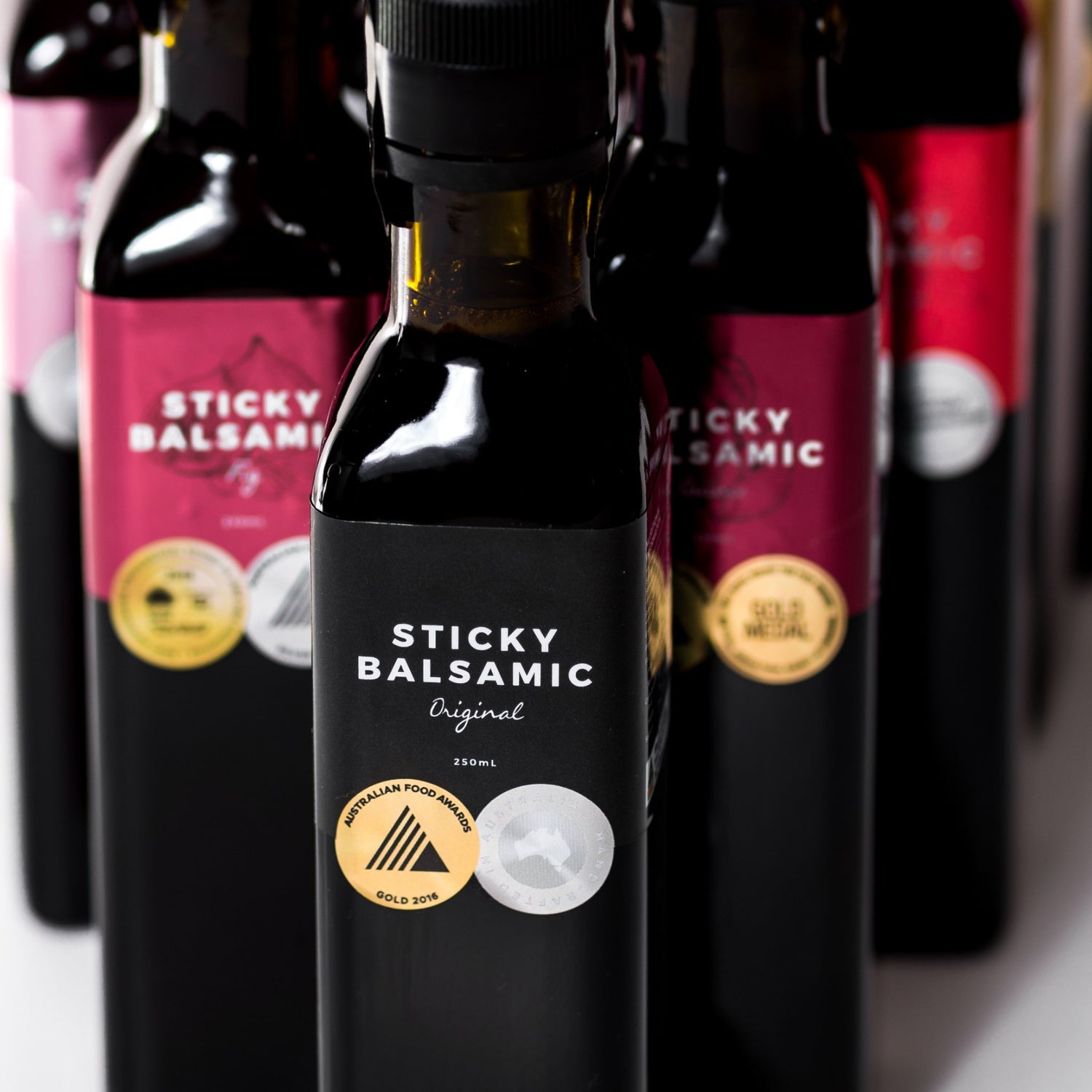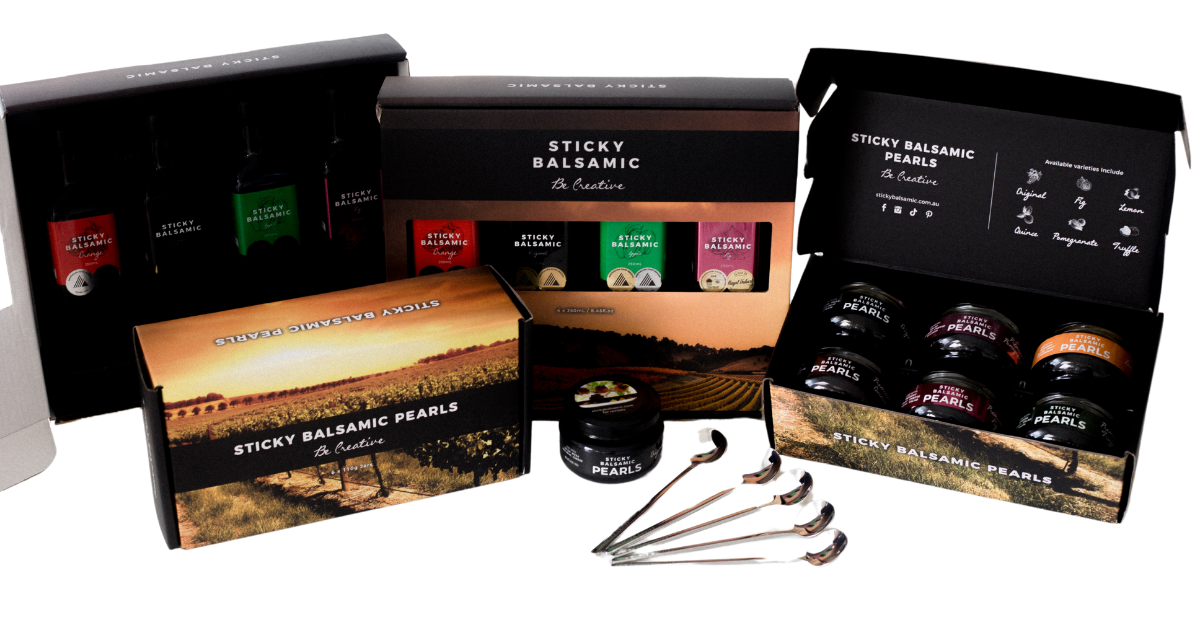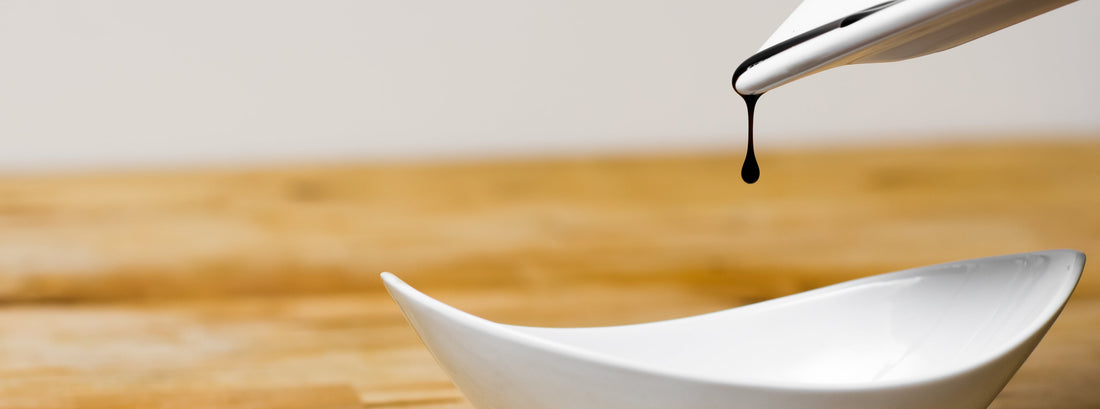Can Balsamic Vinegar Go Bad? The Complete Guide to Freshness and Safety
When you discover that forgotten bottle of balsamic vinegar tucked away in your pantry, the first question that comes to mind is: can balsamic vinegar go bad? This concern is completely understandable, especially when you're unsure how long it's been sitting there. The good news is that balsamic vinegar is remarkably resilient, but understanding the nuances of its shelf life, storage requirements, and quality indicators will help you make informed decisions about its safety and usability.
Understanding Balsamic Vinegar's Natural Preservation
Balsamic vinegar possesses inherent qualities that make it highly resistant to spoilage. The fundamental reason lies in its acidic nature, with naturally low pH levels¹. This high acidity creates an environment where harmful bacteria and pathogens cannot survive or multiply, making balsamic vinegar naturally self-preserving.
The production process of balsamic vinegar involves fermenting grape must (freshly crushed grape juice) into acetic acid through bacterial action. This fermentation process creates natural compounds that further inhibit spoilage and contribute to the vinegar's stability². The combination of acidity and these naturally occurring preservatives means that properly stored balsamic vinegar can maintain its safety for extended periods.
The Reality of Balsamic Vinegar "Going Bad"
Technically speaking, balsamic vinegar doesn't go bad in the traditional sense that milk or meat would spoil. Instead, it experiences gradual quality changes over time. The vinegar remains safe to consume long after its printed expiration date, but its flavour profile, appearance, and overall quality may evolve.
The concept of balsamic vinegar going bad is more accurately described as quality deterioration rather than spoilage. This distinction is crucial because it means that even aged balsamic vinegar is typically safe to consume, though it may not provide the optimal culinary experience you expect³.
Factors That Influence Quality Degradation
Several environmental factors can accelerate quality changes in balsamic vinegar:
Temperature Effects
Temperature fluctuations are among the most significant contributors to degradation. Extreme heat can cause the vinegar to concentrate through evaporation, altering its consistency and flavour intensity⁴. Conversely, freezing temperatures can cause crystallization and separation.
Light Exposure
Light exposure, particularly direct sunlight, can trigger photochemical reactions that affect both colour and taste. Ultraviolet rays can break down complex flavour compounds, leading to a flatter, less nuanced taste profile⁵. This is why quality balsamic vinegars are typically sold in dark glass containers.
Oxygen Exposure
Oxygen exposure is another critical factor. While balsamic vinegar is more resistant to oxidation than many other food products, prolonged exposure to air can gradually alter its characteristics. This process is slow but becomes more noticeable over extended periods⁶.
Different Types and Their Longevity
The type of balsamic vinegar significantly impacts its longevity and resistance to quality degradation:
Traditional Balsamic Vinegar
Traditional Balsamic Vinegar of Modena (Aceto Balsamico Tradizionale di Modena) represents the highest quality category. These vinegars undergo extensive aging processes, sometimes spanning decades, which creates remarkable stability and complexity⁷.
Commercial Balsamic Vinegar
Commercial balsamic vinegars, which constitute the majority of supermarket offerings, are typically made with wine vinegar, grape must, and sometimes additional ingredients like thickeners (Sticky Balsamic Vinegars do not have any thickeners added). While these products have excellent shelf life, they may be more susceptible to quality changes than their traditional counterparts⁸.
Balsamic Glazes and Reductions
Balsamic glazes and reductions often contain added stabilizers (but Sticky Balsamic doesn't!), which can affect their longevity. These products may be more prone to crystallization or separation over time, though they remain safe to consume.
Recognizing Quality Changes
Understanding how to identify quality changes in balsamic vinegar is essential for determining whether it's still suitable for use:
Visual Indicators
- Sediment formation at the bottom of the container is common and usually harmless, representing natural settling of particles over time⁹
- Colour changes can occur gradually, with some vinegars becoming darker or lighter depending on their composition and storage conditions
- Cloudy appearance may develop but doesn't necessarily indicate spoilage
Taste and Aroma Changes
- Fresh, high-quality balsamic vinegar should have a balanced sweet-tart flavour with complex undertones
- Off-flavours such as overly harsh, flat, or unusual tastes may indicate quality deterioration¹⁰
- Texture changes like increased thickness or syrupy consistency can occur through natural concentration
Proper Storage for Maximum Longevity
Optimal storage practices are crucial for maintaining balsamic vinegar's quality and extending its usable life:
Before Opening
- Store in a cool, dark location such as a pantry or cupboard
- Keep away from heat sources and direct sunlight¹¹
- Maintain ideal storage temperature between 60-70°F (15-21°C)
After Opening
- Ensure the container is tightly sealed after each use to minimize air exposure
- Refrigeration isn't necessary but can help slow quality changes¹²
- Use glass containers for long-term storage over plastic
- Ensure containers are thoroughly cleaned and completely dry
Safety Considerations and Rare Exceptions
While balsamic vinegar rarely becomes unsafe to consume, certain conditions can lead to contamination:
Prevention Measures
- Always use clean utensils when handling balsamic vinegar
- Avoid double-dipping or introducing food particles¹³
- Store in sanitary conditions
- Check for container damage before purchasing
Warning Signs
Extremely rare cases of contamination might include:
- Unusual odours
- Visible mold growth
- Fizzing when opened (indicating unwanted fermentation)¹⁴
Shelf Life Expectations
Understanding how long balsamic vinegar lasts helps you make informed decisions:
Unopened Bottles
- Can maintain quality for several years beyond printed expiration or best-before date
- High-quality traditional varieties can last indefinitely and may improve with age¹⁵
- Commercial varieties typically maintain peak quality for 3-5 years
Opened Bottles
- Most balsamic vinegars retain optimal characteristics for 1-3 years with proper storage¹⁶
- Quality may gradually change but remains safe to consume
- Dates are typically "best by" rather than safety expiration dates
Making the Most of Your Balsamic Vinegar
To maximize your balsamic vinegar's lifespan and quality:
- Purchase from reputable sources with proper storage practices
- Check containers for damage before buying
- Consider usage patterns when selecting sizes
- Smaller quantities for infrequent use ensure freshness
- Larger bottles are economical for regular users
When to Replace Your Balsamic Vinegar
While balsamic vinegar rarely becomes unsafe, replacement may be advisable when:
- Strong off-flavours develop
- Unusual odours are present
- Visible signs of contamination appear
- Quality has degraded significantly¹⁷
Frequently Asked Questions
Q: Can balsamic vinegar go bad?
A: Balsamic vinegar doesn't go bad in the traditional sense due to its high acidity. While quality may change over time, it remains safe to consume when stored properly.
A: Balsamic vinegar doesn't go bad in the traditional sense due to its high acidity. While quality may change over time, it remains safe to consume when stored properly.
Q: How can I tell if my balsamic vinegar has gone bad?
A: Look for unusual odours, significant colour changes, or off-flavours. However, balsamic vinegar rarely becomes unsafe due to its acidic nature.
A: Look for unusual odours, significant colour changes, or off-flavours. However, balsamic vinegar rarely becomes unsafe due to its acidic nature.
Q: Does balsamic vinegar need to be refrigerated?
A: Refrigeration isn't necessary for balsamic vinegar due to its natural preservation properties, but it can help slow quality changes.
A: Refrigeration isn't necessary for balsamic vinegar due to its natural preservation properties, but it can help slow quality changes.
Q: What's the shelf life of opened balsamic vinegar?
A: Opened balsamic vinegar maintains optimal quality for 1-3 years with proper storage, though it remains safe much longer.
A: Opened balsamic vinegar maintains optimal quality for 1-3 years with proper storage, though it remains safe much longer.
Conclusion
Can balsamic vinegar go bad? The answer is nuanced: while it doesn't spoil in the traditional sense, balsamic vinegar can experience quality changes over time. With proper storage and handling, balsamic vinegar remains safe and usable for years beyond its printed dates. Understanding the factors that affect quality and recognizing signs of change empowers you to make informed decisions about your culinary ingredients.
The remarkable stability of balsamic vinegar makes it one of the most reliable condiments in your kitchen arsenal. By following proper storage practices and regularly assessing quality, you can enjoy this versatile ingredient at its best while minimizing waste and maximizing flavour in your culinary adventures.
References:
- Budak, N.H., et al. (2014). Functional properties of vinegar. Journal of Food Science, 79(5), R757-R764.
- Johnston, C.S. & Gaas, C.A. (2006). Vinegar: medicinal uses and antiglycemic effect. MedGenMed, 8(2), 61.
- Giudici, P., et al. (2009). Traditional balsamic vinegar. In Vinegars of the World (pp. 157-177). Springer.
- Adams, M.R. & Moss, M.O. (2008). Food Microbiology. Royal Society of Chemistry.
- Plessi, M., et al. (2006). Traditional balsamic vinegar and balsamic vinegar of Modena analyzed by near infrared spectroscopy. Journal of Near Infrared Spectroscopy, 14(3), 165-170.
- Solieri, L. & Giudici, P. (2008). Vinegars of the world. Springer Science & Business Media.
- Cocchi, M., et al. (2006). Classification of Aceto Balsamico Tradizionale di Modena very old samples using headspace mass spectrometry. Talanta, 70(4), 766-770.
- Verzelloni, E., et al. (2007). Antioxidant properties of traditional balsamic vinegar. European Food Research and Technology, 224(1), 51-58.
- FDA Food Code. (2017). U.S. Department of Health and Human Services.
- Sengun, I.Y. & Karapinar, M. (2005). Effectiveness of household natural sanitizers in the elimination of Salmonella typhimurium. Food Control, 16(5), 437-445.
- International Vinegar Museum. (2019). Storage and Preservation Guidelines for Vinegar Products.
- Entani, E., et al. (1998). Antibacterial action of vinegar against food-borne pathogenic bacteria. Journal of Food Protection, 61(8), 953-959.
- Jay, J.M., et al. (2005). Modern Food Microbiology. Springer Science & Business Media.
- Pitt, J.I. & Hocking, A.D. (2009). Fungi and Food Spoilage. Springer Science & Business Media.
- Masino, F., et al. (2008). Traditional balsamic vinegar and balsamic vinegar of Modena analyzed by nuclear magnetic resonance spectroscopy coupled with multivariate data analysis. LWT-Food Science and Technology, 41(12), 2025-2028.
- Institute of Food Technologists. (2018). Shelf Life Guidelines for Acidic Food Products.
- Labuza, T.P. & Schmidl, M.K. (1985). Accelerated shelf-life testing of foods. Food Technology, 39(9), 57-64.

